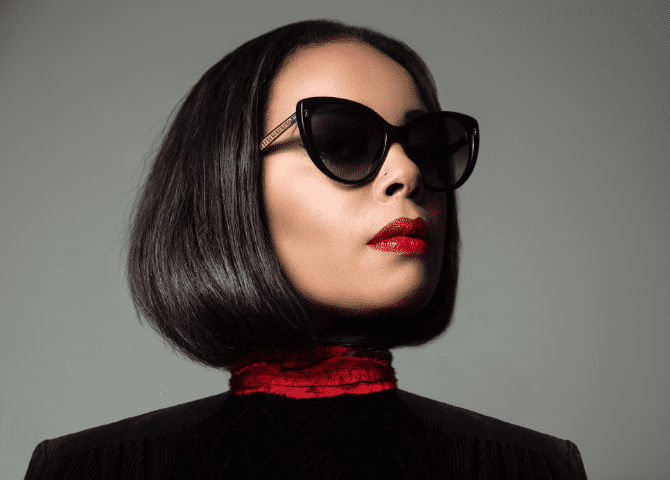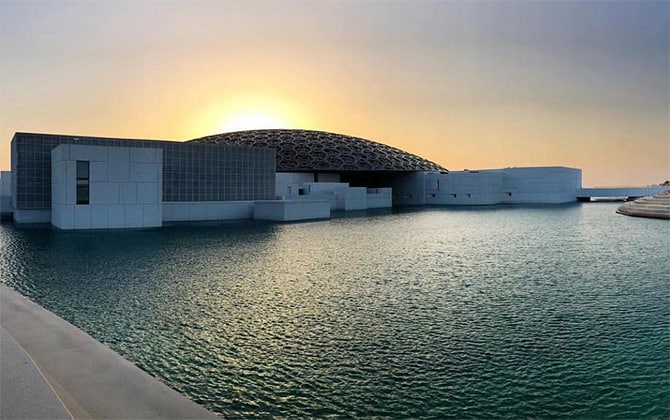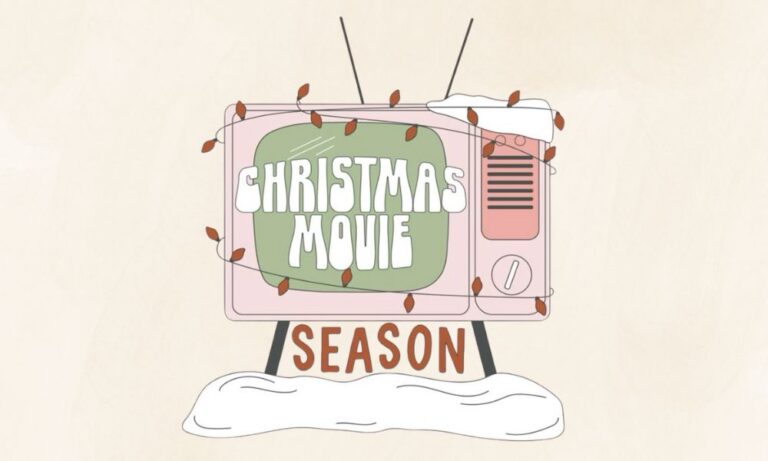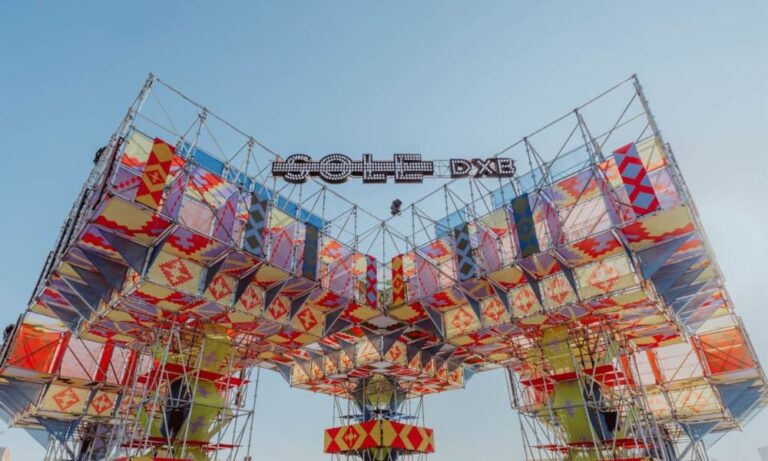It’s a pleasure to present to you this multi-dimensional cultural force, who not only embraces her Sudanese heritage but is the embodiment of everything that bridging cultures represents: Rozan Ahmed.
Her diverse background (African, British, Muslim, Sudanese and Arabic-speaking), combined with her Western upbringing, reminds us of how inclusive and informed the world can really become. She is a genuine breath of fresh air who’s always ahead of the game with an authentic, unafraid and unique point of view that continues to influence the influential.
Rozan has shifted perceptions and moved entire markets through a strategic belief in the cultural and stylistic embrace of ‘self’. At the tender age of 21, she was the youngest appointed Editor in British Publishing and a Young Global Leader by the age of 28. Her “ethos” focus on solving world problems through a unique combination of entrepreneurial, philanthropic and curatorial activity, becoming a role model for women and young entrepreneurs across the UK, Africa and Arabia.
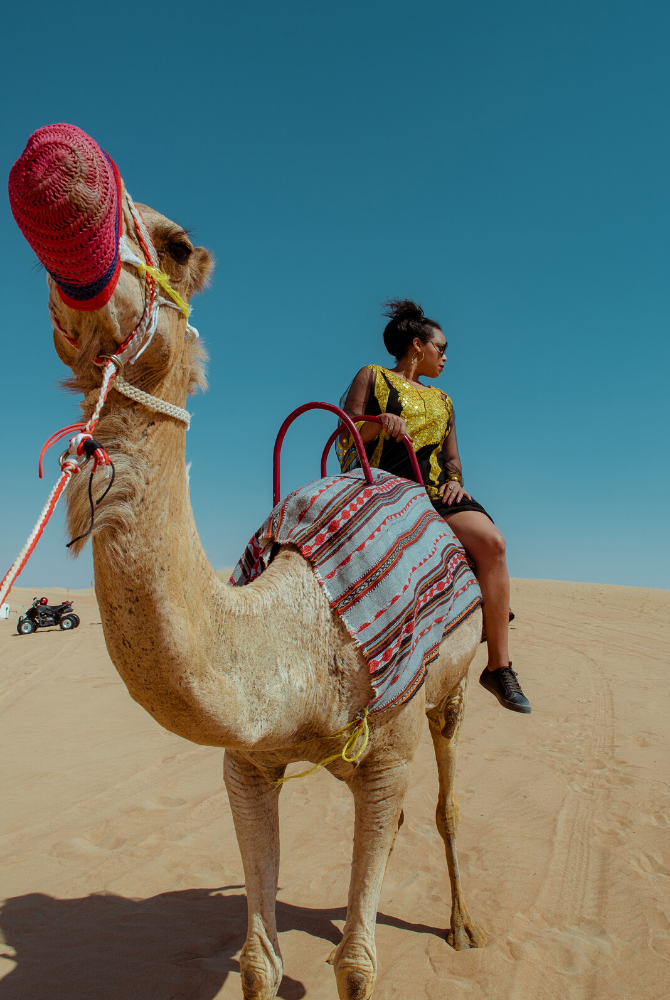
Rozan is an ambassador, advocate, activist and champion of new fashion and the arts — whether in social change and exchange, youth development, local creativity as a national priority, and continues to play a pivotal role in shaping what she calls the “African renaissance”.
Thank you for taking the time to speak to us today. How have you been dealing with this difficult time?
It’s been a whirlwind — personally and professionally. In hindsight though, I do feel like I was prepared for this. Shifts were taking place within me and in my working world that almost suggested this moment of required stillness, re-evaluation and re-structure. Fashion for example was headed nowhere. We as humanity were headed nowhere. 2019 was the year that made this reality very (very) clear. We were in an emergency. The world was in protest. So many had had enough. We needed a reboot, and I’m hoping this time offers the empathetic thinking space for that.
“It’s just tragic that a fear-filled virus had to come along for this necessary pause to finally happen.”
Heritage and innovation have somewhat always been viewed as stark opposites. Any relationship would be an oxymoron. Why do you think otherwise?
Ultimately, we’re a result of our past. Whether we like it or not, we’re the outcome of our history. How do we then move forward, or truly innovate, without knowing who we are? Or how we came to be? Understanding and respecting heritage can also inspire innovation. Studying our past (history and habit) can really help us in grasping the present, and therefore the future.
It all goes hand in hand as far as I’m concerned. Look at concepts like ‘sustainability’ for example. Broken down, most of the world STILL lives in a sustainable manner, suffering from the more recent behaviour of careless greed — such as the woes of fast fashion or a generally wild and monopolised consumption of literally everything.
Sustainability is a community based and historical way of being — in many parts of the world. So essentially, ‘sustainability’, as exerted in western fashion spaces isn’t introducing anything new, but innovating the conserving aspects of our heritage? Isn’t it?
Can you tell us more about your initiative, the ‘Magic Drive’?
Honestly, the Magic Drive is my most treasured accomplishment. We started the initiative almost 18 months ago so things are still in growth, but the impact has already been phenomenal. I’ve always been one to “disrupt” (before the methodology got a ‘buzz word’), and in this case, I wanted to tackle ideas around development, elongated capacity-building, and why creativity isn’t considered enough in this space. In many ways the Magic Drive is a powerful amalgamation of my entire career, aligning arts & culture, fashion, sports and entertainment, with confidence, identity, community, collaboration and immediate transformation. Our programs are based in Kenya for now but will spread widely once this corona period is over. Check out gofundme.com/themagicdrive and watch the video — it’s really the best way to get familiar, and involved.
What would you advise people that want to donate to a cause and ensure that their chosen charity is properly supported?
I would say by going smaller, and really being a part of the impact. This is why the Magic drive focuses on collective contribution. Everyone involved, whether through monetary donations, sending us unsold collections, or just giving from their own personal wardrobes, they know, understand, see and feel the WHY behind our work. We’ve even had supporters join us on the programs, creating content and training/styling the kids. This really is a joint effort, and that’s how we successfully move away from “charity” to “responsibility”.
Mismanaged funds are rife across the development sector, it’s very difficult to track where donations go and repeated incidents of corruption continue. Messages with larger agencies are often (and purposely) confusing. Avoid them. Get more familiar with what and who you’re supporting. In my view, that’s the only way.
For designers that want to learn more about working and supporting artisans from different cultures; what would be your advice as to how one would go about allocating them?
Thanks to the internet it can often be as simple as going online and looking up artisanal work from any part of the globe. There is a gift and curse element to this however, because we’ve seen a lot of IP and copyright theft take place as a result of so much being easily accessible.
If a designer’s keen to work with traditional artisans and is based in the Arabian or African regions, or Asia for that matter, then they’d probably be blessed to find them outside their doorstep. I personally have my jewellery made by Massai women in Kenya (who pray over the beads as they create my pieces, which I love). Nubian women in Sudan too, who I work with to recreate ancient jewellery to suit my more modernised liking. I also like to scour smaller markets everywhere I go, and see if I can decipher local styles. I love finding beauty in the most unexpected places, and supporting that beauty as much as I can. This is in fact how I began my work in Arabia back in 2010, by visiting a mall in Bahrain and noticing there wasn’t a single store catering to local design, local products or local creativity. It was that observation that had me dive into, educate, cultivate and build on the Arabian story, alongside Africa of course — what can I wear from here? What can I enjoy from here? What is going to inspire me, here? How can we creatively develop and re-present what is right here?
“Understanding and respecting heritage can also inspire innovation.”
In your recent keynote for BOF (Business of Fashion), you talk about your impressively layered DNA. How has your diverse background affected your perception and point of view?
I think it’s taught me, more than anything, that is in fact possible to be as layered in my work as I am a human being — and that’s okay. In fact it’s amazing. I recently spoke at Facebook’s “Women Leadership Day” about personified globalization (#IamGlobalization), a hashtag I coined that caught their attention due to their focused theme of “belonging”. I explained that first and foremost, you have to belong to yourself. All of you must be known to you, and belong to you — first, before identifying with anywhere else.
Multi-culture for me means multi-opportunity. Not everyone’s able to go to Saudi Arabia, Kenya, the UK, Nigeria, America, Sudan, Ethiopia, Jamaica, Dubai, and generally familiarise with all every environment comfortably. It allows for more openness in point of view, more empathy in perception, and actually, even more belonging. Our fluidity as third culture humans (despite the probable identity crisis growing up) is pretty incredible.
In these difficult times we are currently facing with the outbreak of COVID-19, how can we reach out more efficiently to the ones in need?
I would start off by asking your immediate friends/family, checking in within your immediate community and offering to help with any initiatives that may be ongoing to support those less fortunate. If you’d like to offer support on a wider scale, then you can always donate to the ‘Magic Drive’, and witness the fruits of your love for humanity first hand, and always.
What does style mean to you?
Style means attitude to me, and an assertion of identity, or not.
Less is more or more is more?
Less is more… Unless it’s gold. If it’s gold then more is more, and even more.
Who is your most inspiring Arab role model?
I’d have to say Sherihan. Her style, her beauty, her personality, her dance. She was a bonafide obsession growing up, along with Michael Jackson, Janet Jackson and Fela Kuti.
Discover Hatem Alakeel’s Gems of Arabia column here.
Also, meet Eli Mizrahi — an Arab GEM who’s passion is to bridge cultures.
